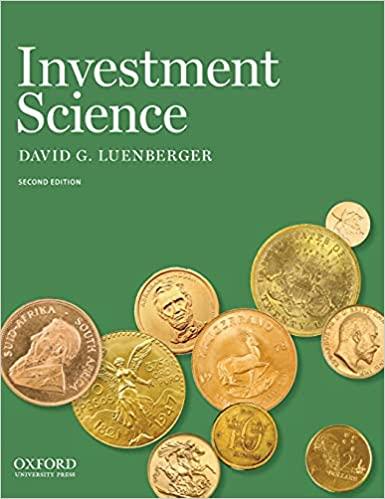A company earns a rate of return of $r_{A}$ and has beta $beta_{A}$. A fraction $w$ of
Question:
A company earns a rate of return of $r_{A}$ and has beta $\beta_{A}$. A fraction $w$ of the assets is owned by bondholders, and the remaining fraction $(1-w)$ is owned by equity holders. Every year, the bondholders demand a riskless rate of return of $r_{B}$ on their fraction of the assets, regardless of the actual rate of return $r_{A}$ that was achieved that year. Beyond that, the equity holders take whatever is left after the bondholders have been paid.
(a) What is the rate of return of the equity holders in terms of $w, r_{A}$, and $r_{B}$ ?
(b) What is the beta of the rate of return of the equity holders in terms of $w$ and $\beta_{A}$ ?
(c) Suppose $\beta_{A}$ is positive and the expected rate of return on the market is greater than the risk-free rate. As $w$ increases (that is, as the firm becomes more leveraged), what should happen to the expected rate of return on the equity in the firm?
Step by Step Answer:






